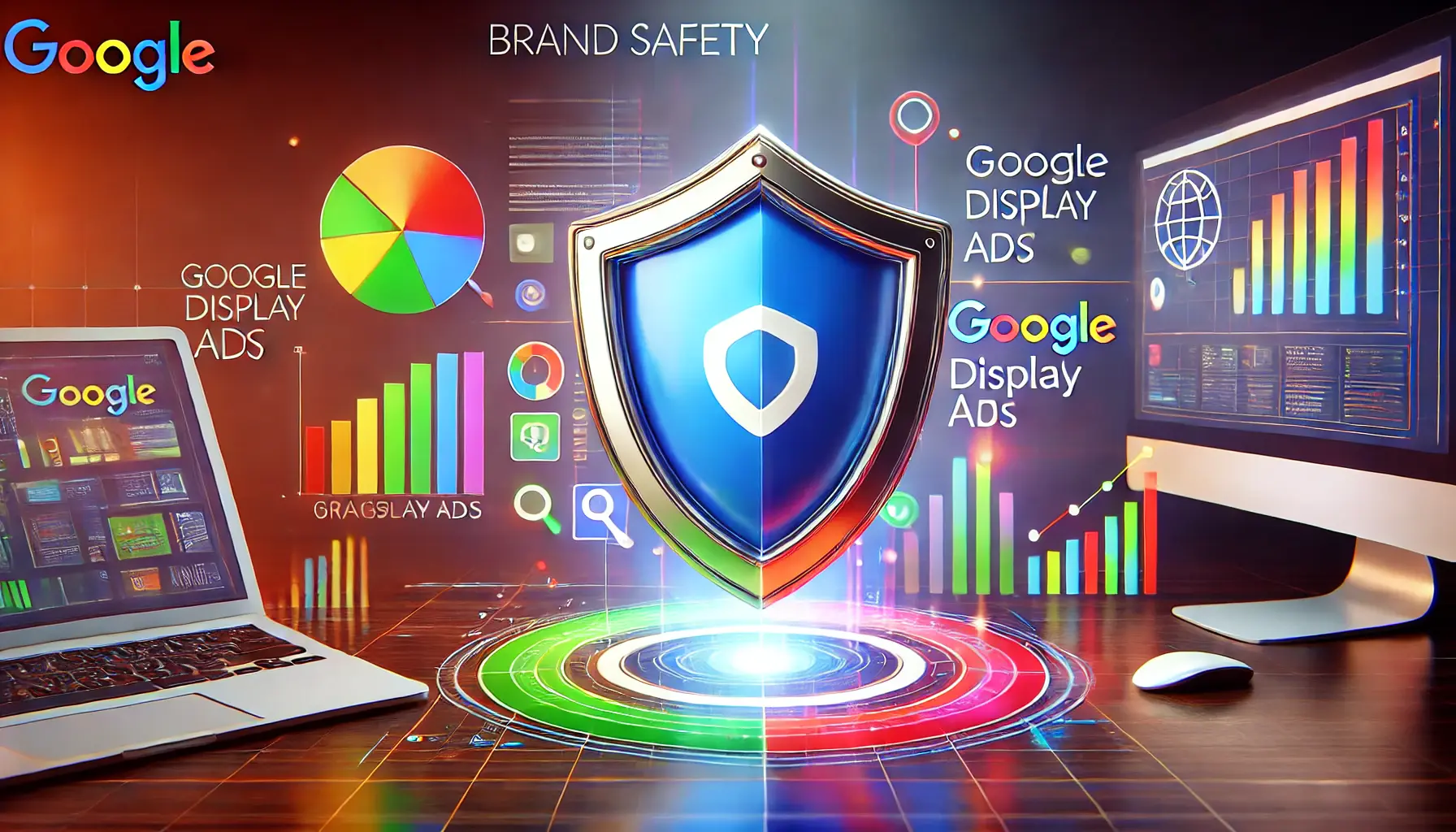Building brand loyaltyA customer's preference for a brand, demonstrated by repeat purchases or advocacy. at this considered stage is one of the surest ways for any firm to establish a long-term relationship with its customers.
It’s that stage when customers actively consider their alternatives, evaluating different brands in light of their needs, and making choices that fit those needs and values best.
By focusing on this crucial stage, you can develop strategies that capture attention and build trust and loyalty beyond the first purchase.
In this article, we look at practical, time-tested strategies to help your brand build brand loyalty at the consideration phaseThe stage in the customer journey where potential customers evaluate different options before making a decision..
From understanding customer behavior to leveraging Google Ads, here are some insights designed to give your brand a competitive edge.
Let’s dive into the first step: understanding brand loyalty in the consideration phase.
- Understanding Brand Loyalty in the Consideration Phase
- Personalized Campaigns: Tailoring Ads for Maximum Impact
- Leverage Retargeting to Reinforce Brand Connections
- Delivering Value-Driven Content to Build Trust
- Measuring and Optimizing Brand Loyalty in Google Ads
- Building Brand Loyalty: A Strategic Roadmap
- Frequently Asked Questions on Building Brand Loyalty
Understanding Brand Loyalty in the Consideration Phase
The consideration phase is a pivotal point in the customer journey.
It’s where potential customers have moved beyond awareness and are seriously evaluating their choices.
In this phase, brand loyalty is influenced by the impressions you’ve already made and the value you continue to provide.
This calls for deep customer understanding, especially in terms of how your offerings cater to their needs.
Why is brand loyalty more important during this phase?
Customers in the consideration phase are not only considering a purchase; they’re also deciding whom to trust.
Much of this trust determines whether they return to your brand in the future.
Establishing loyalty at this stage sets the foundation for repeat business, referrals, and long-term brand advocates.

An image illustrating the thoughtful decision-making process during the consideration phase of customer journeys.
What is the Consideration Phase in Customer Journeys?
The consideration phase occurs after potential customers become aware of your brand but before they make a purchase decision.
During this time, they are gathering information, comparing options, and determining which product or service best suits their needs.
It’s a time for careful consideration and intentional choice.
Your job as a marketer is to provide relevant, compelling information that communicates your brand’s unique value.
By addressing customer pain points and presenting tailored solutions, you increase the likelihood of your brand being their ultimate choice.
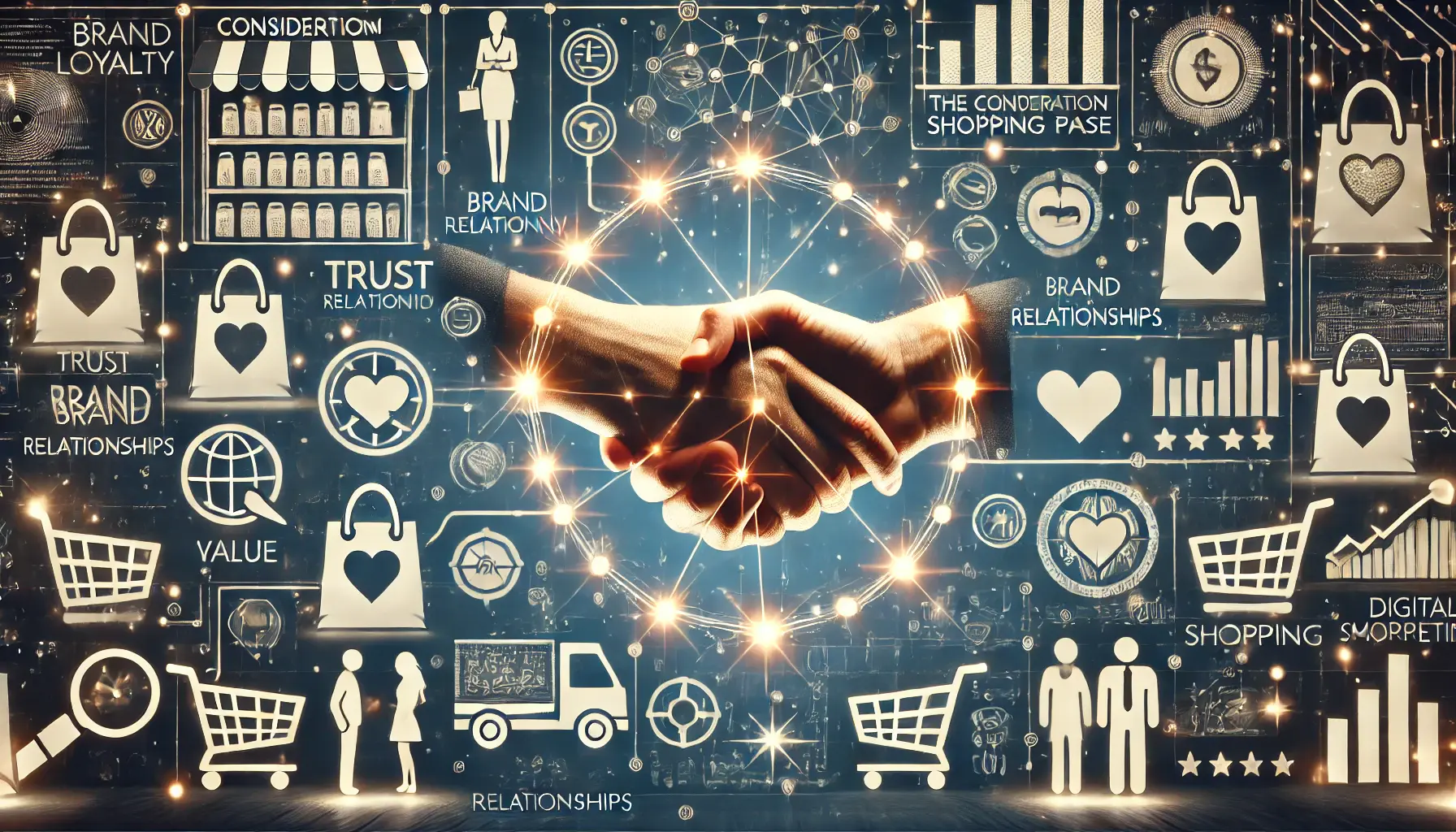
undefined
Why Brand Loyalty Matters During Consideration
Brand loyalty during the consideration phase doesn’t just increase the chances of a sale; it also paves the way for long-term customer relationships.
When customers feel connected to your brand, they are more likely to make repeat purchases, recommend your products to others, and become loyal advocates.
- Higher conversion rates: Loyal customers are more inclined to choose your brand over competitors.
- Increased lifetime value: Customers who trust your brand are more likely to return for future purchases.
- Better brand perception: A loyal customer base enhances your reputation and credibility in the market.
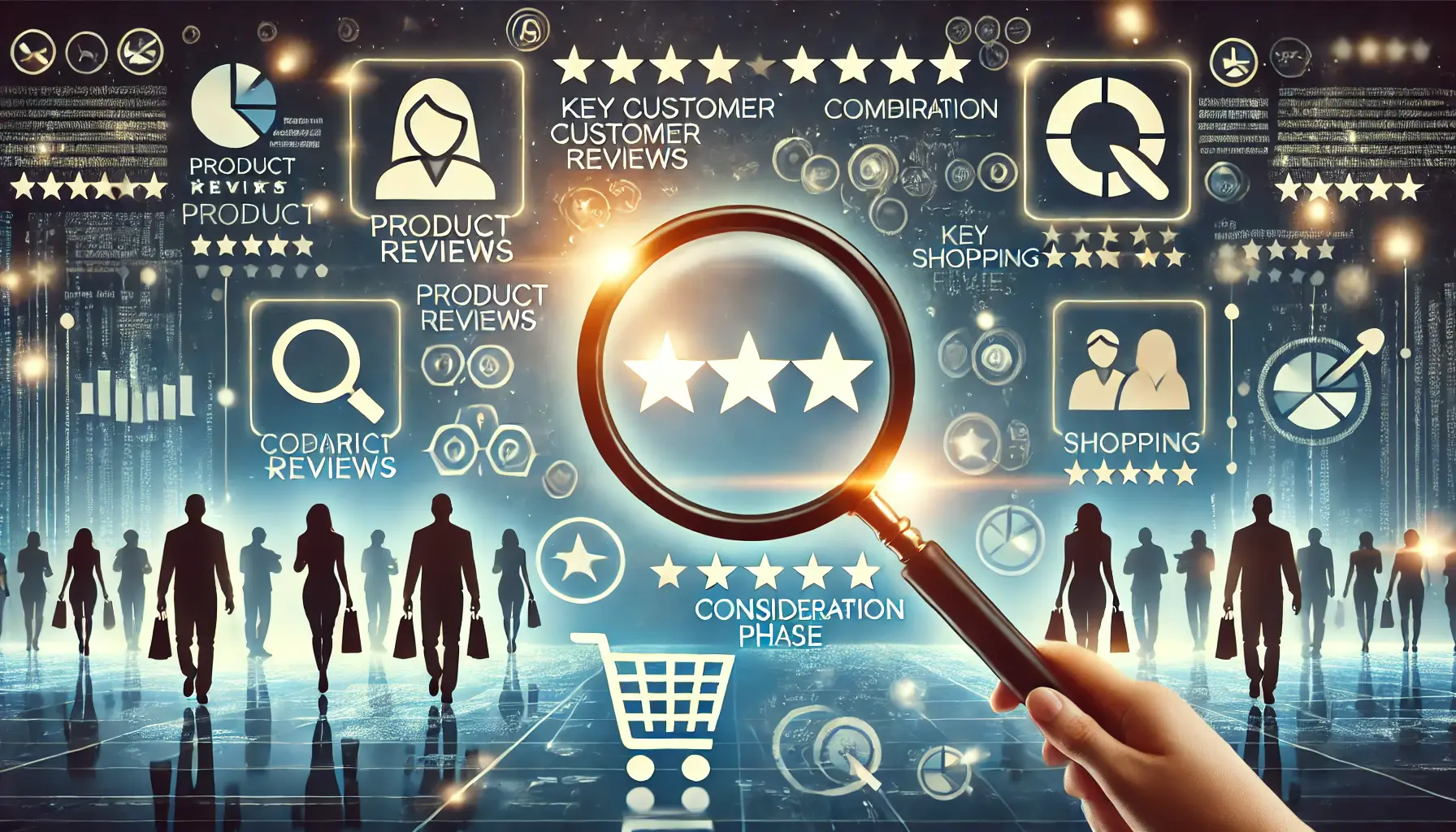
An image depicting the exploration and evaluation activities of customers during the consideration phase.
Key Behaviors of Customers in the Consideration Phase
Understanding how customers behave in this phase can guide your strategies.
Here are a few common behaviors:
- Researching products: Customers typically research features, reviews, and prices to make an informed decision.
- Engaging with brands: They explore your content, including blog posts, videos, and social media, to learn more.
- Seeking recommendations: Many rely on peer reviews, testimonials, or influencer endorsements to validate their choice.
By aligning your marketing efforts with these behaviors, you can create a customer experience that builds trust and drives loyalty during this critical stage.
Understanding the customer journey and providing value during the consideration phase builds trust and loyalty.
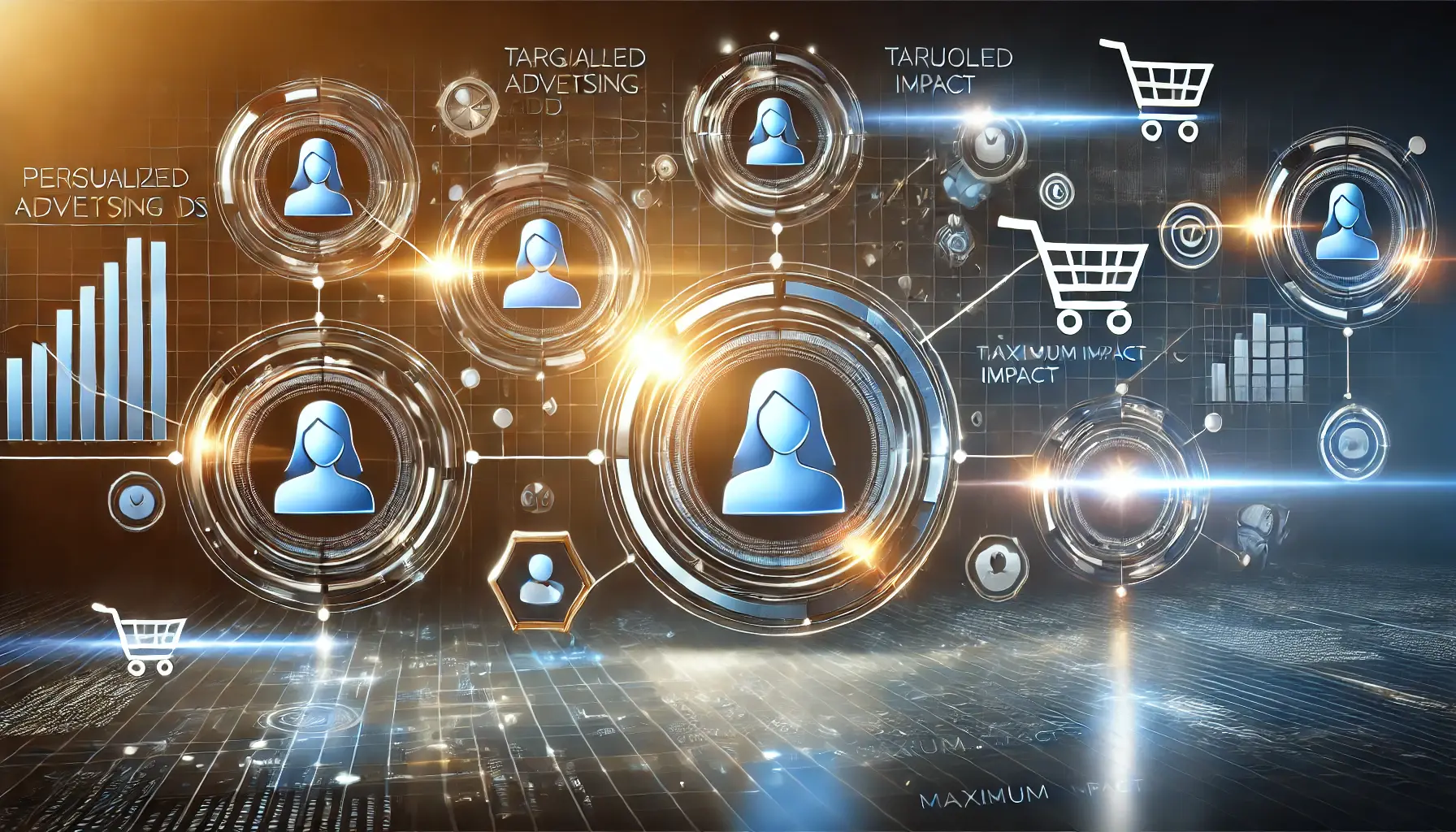
An image showcasing the precision and customization of personalized advertising campaigns.
Personalized Campaigns: Tailoring Ads for Maximum Impact
Personalization is one of the most effective strategies to build brand loyalty during the consideration phase.
By creating tailored campaigns that resonate with your audience’s preferences, you can enhance their engagement and make your brand the top choice.
Google Ads offers a variety of tools and features that help marketers create personalized campaigns that drive results.
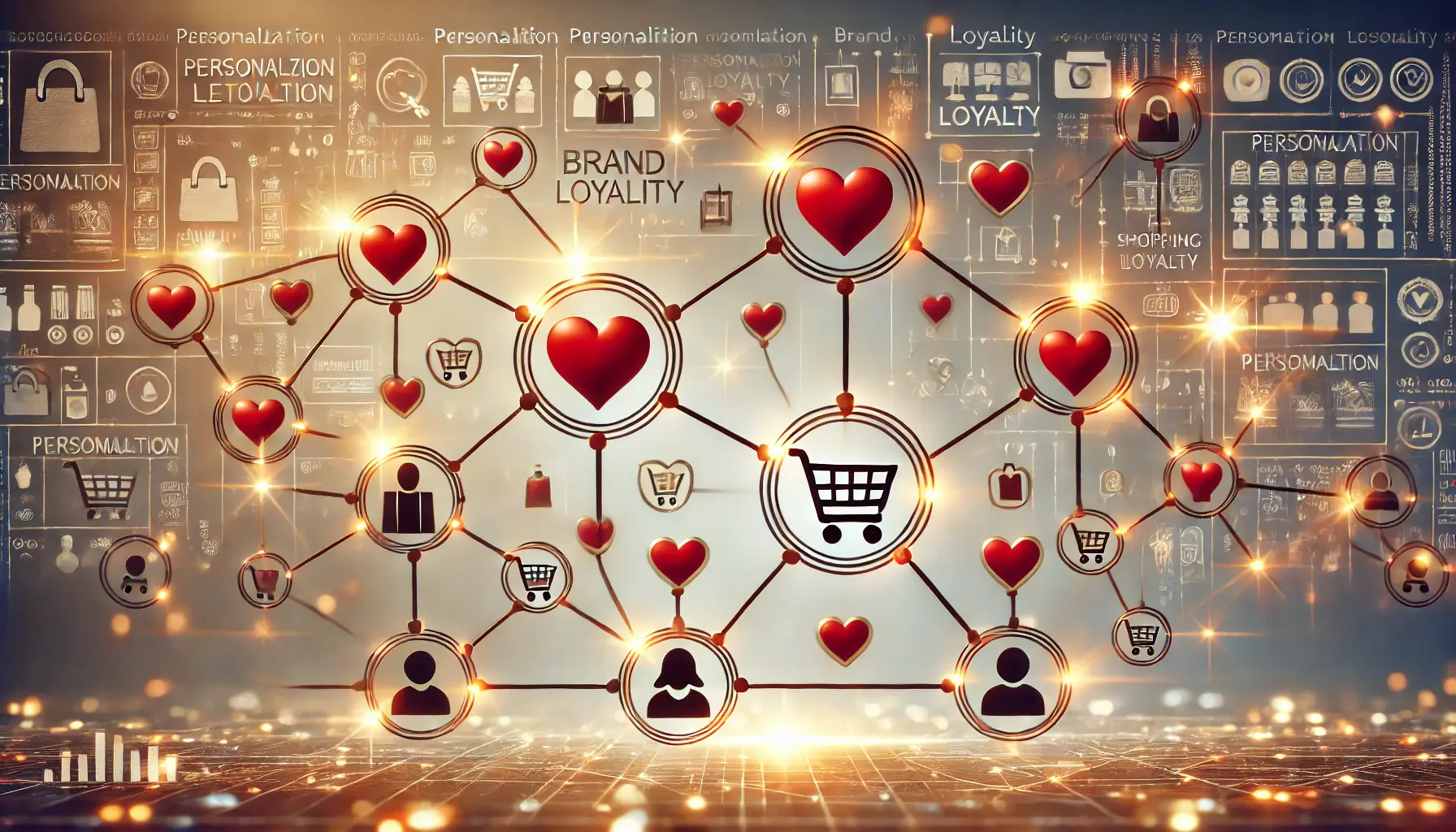
An image illustrating the impact of personalized interactions on boosting brand loyalty.
How Personalization Boosts Brand Loyalty
Customers expect businesses to understand their needs and deliver relevant solutions.
Personalized advertising taps into this expectation, helping you connect with potential customers on a deeper level.
When your ads reflect their interests, problems, or aspirations, they feel valued, which builds trust and strengthens brand loyalty.
- Improved engagement: Personalized ads are more likely to grab attention and elicit clicks.
- Higher conversion rates: Tailored messaging resonates with audiences, increasing the chances of conversion.
- Long-term relationships: Personalization demonstrates that you care about your customers, fostering loyalty.
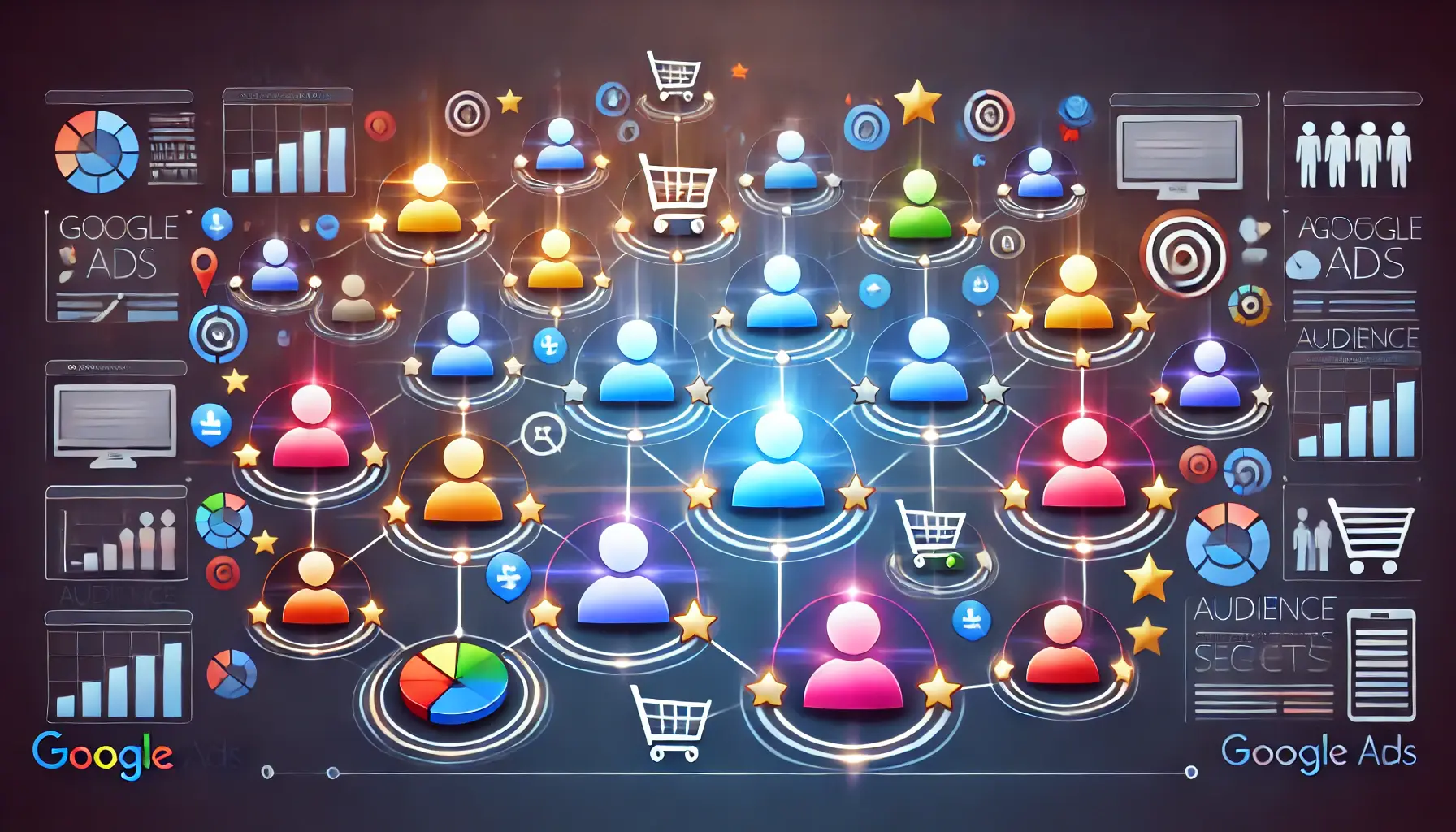
An image illustrating the segmentation of audience groups for targeted advertising in Google Ads.
Creating Audience Segments in Google Ads
To effectively personalize campaigns, start by segmenting your audience based on factors like demographics, interests, and behaviors.
Google Ads provides tools such as:
- Custom Audiences: Define your ideal audience using keywords, URLs, and apps they engage with.
- In-market Audiences: Target users actively researching products or services in your industry.
- Remarketing Lists: Reach users who have interacted with your website or app but haven’t converted yet.
Segmentation allows you to craft messages that speak directly to the unique needs of each group, increasing the relevance of your ads.

An image showcasing the adaptability and precision of dynamic ad personalization strategies.
Best Practices for Dynamic Ad Personalization
Dynamic ad personalization takes things a step further by automatically tailoring ad content to individual users.
This approach uses data such as browsing history, past interactions, and purchase behavior to personalize the ads.
Here’s how you can make the most of it:
- Utilize Dynamic Search Ads: Automatically generate headlines and descriptions based on your website’s content.
- Incorporate Dynamic Remarketing: Show ads featuring products or services that users previously viewed on your site.
- Test and Optimize: Continuously monitor performance and tweak your campaigns to ensure maximum effectiveness.
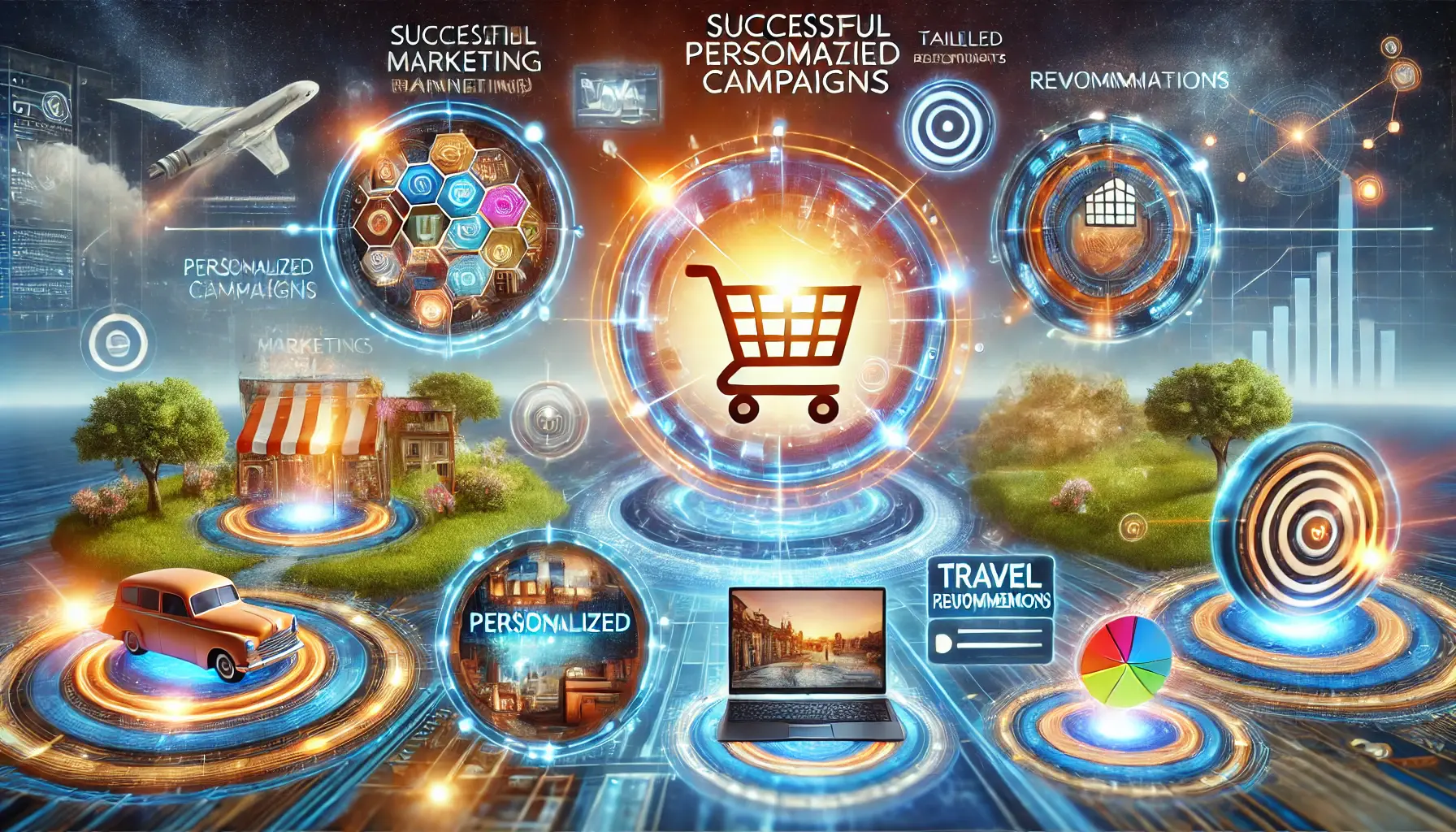
An image illustrating the impact of successful personalized campaigns across various industries.
Examples of Successful Personalized Campaigns
Some brands have mastered the art of personalization, achieving outstanding results:
- Amazon: Uses dynamic ads to recommend products based on user browsing and purchase history.
- Spotify: Delivers personalized playlists and promotional offers tailored to individual music tastes.
- Airbnb: Highlights vacation rentals based on a user’s past searches and travel interests.
These examples showcase how thoughtful personalization can not only boost engagement but also foster loyalty by making customers feel understood and valued.
Personalization in Google Ads campaigns helps capture attention and fosters a deeper connection with potential customers.
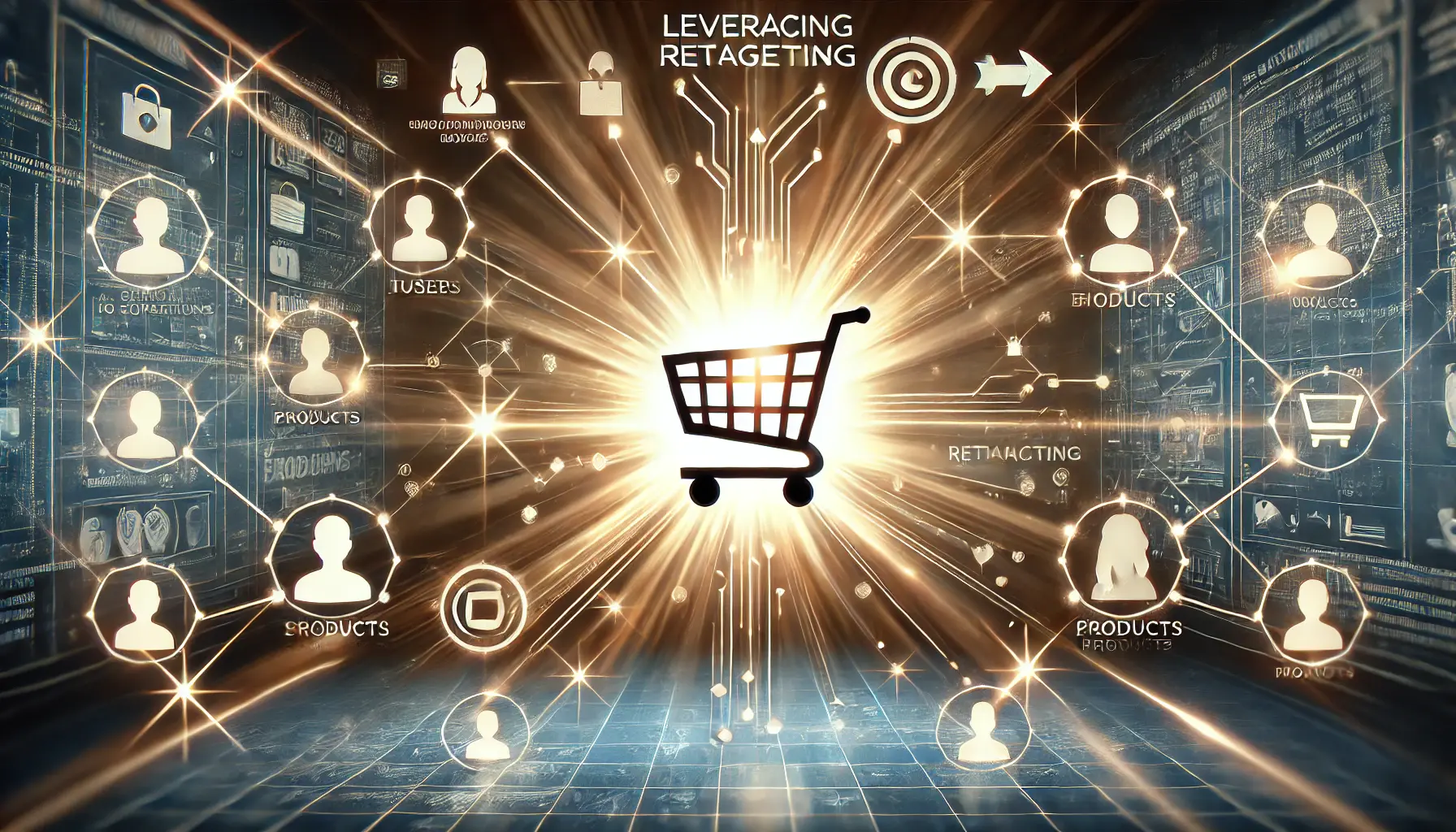
An image showcasing the use of retargeting to strengthen connections with customers and boost engagement.
Leverage Retargeting to Reinforce Brand Connections
Retargeting, or remarketingA synonym for retargeting, often used in Google Ads to re-engage potential customers., is a very strong approach to building brand loyalty at the consideration stage.
Retargeting involves engaging your target audience who have already been in contact with your brand and keeping your offerings at the top of their minds until they are ready to make a purchase.
Google Ads provides robust tools to implement effective retargetingA marketing strategy that shows ads to users who have previously interacted with your brand. campaigns that can significantly enhance your marketing efforts.
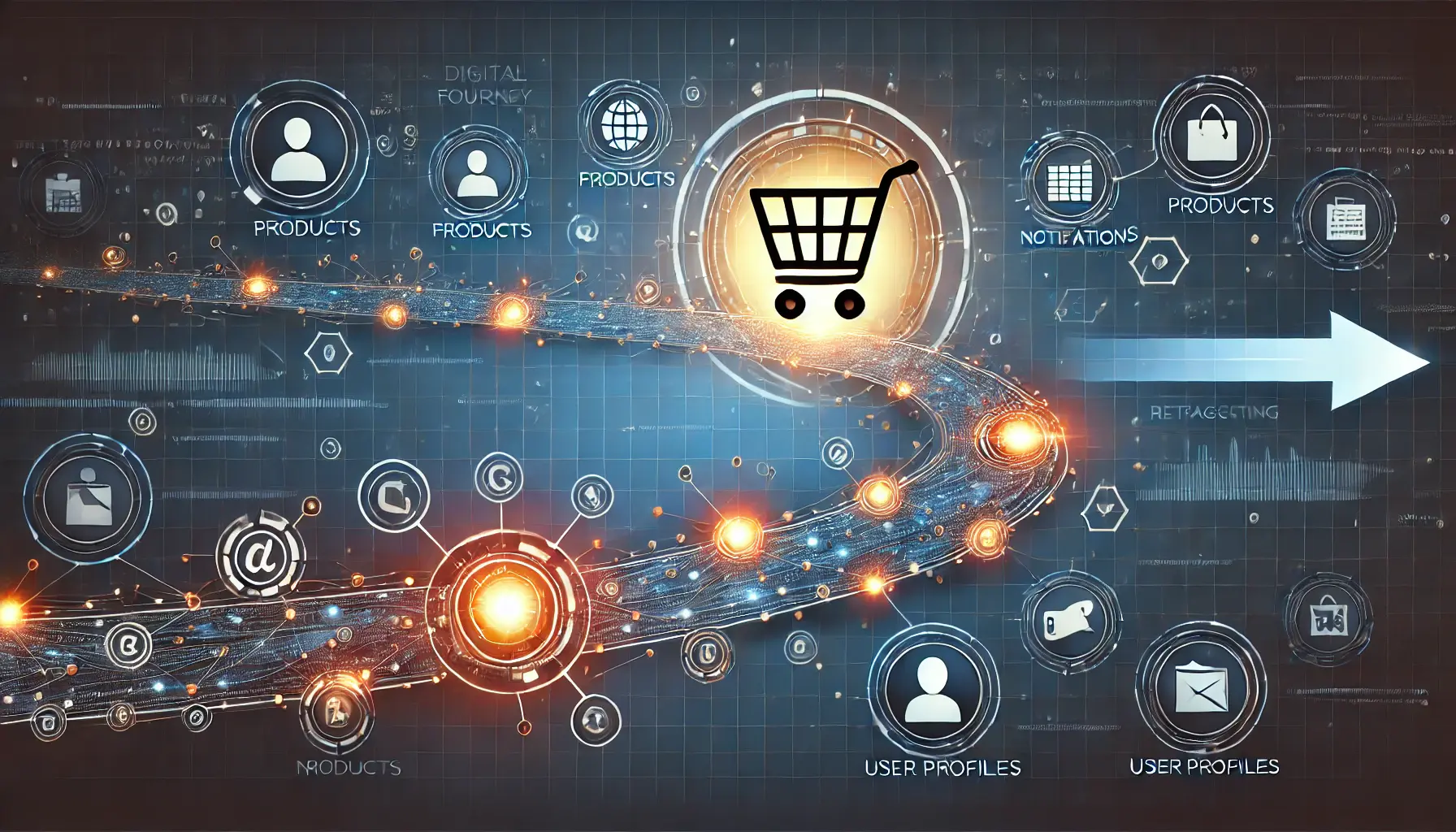
An image illustrating the stages and process of retargeting to re-engage users effectively.
What is Retargeting and How Does It Work?
Retargeting involves displaying targeted ads to users who have visited your website or engaged with your content but haven’t completed a desired action, such as making a purchase.
This is accomplished by placing a small snippet of code, called a pixel, on your website, which drops a cookie in the visitor’s browser.
This cookie enables you to follow the user across the web and present them with relevant ads, reminding them of your brand and encouraging them to return and complete their purchase.

An image demonstrating the role of retargeting in engaging and nurturing customers during the consideration phase.
Using Retargeting to Nurture Consideration-Phase Customers
During the consideration phase, potential customers are evaluating different options.
Retargeting helps you stay connected with these individuals by:
- Maintaining brand visibility: Regular exposure to your ads keeps your brand at the forefront of their minds.
- Providing tailored content: Showcasing products or services they’ve shown interest in increases relevance and engagement.
- Building trust: Consistent and relevant ad exposure fosters familiarity and trust, essential components of brand loyalty.
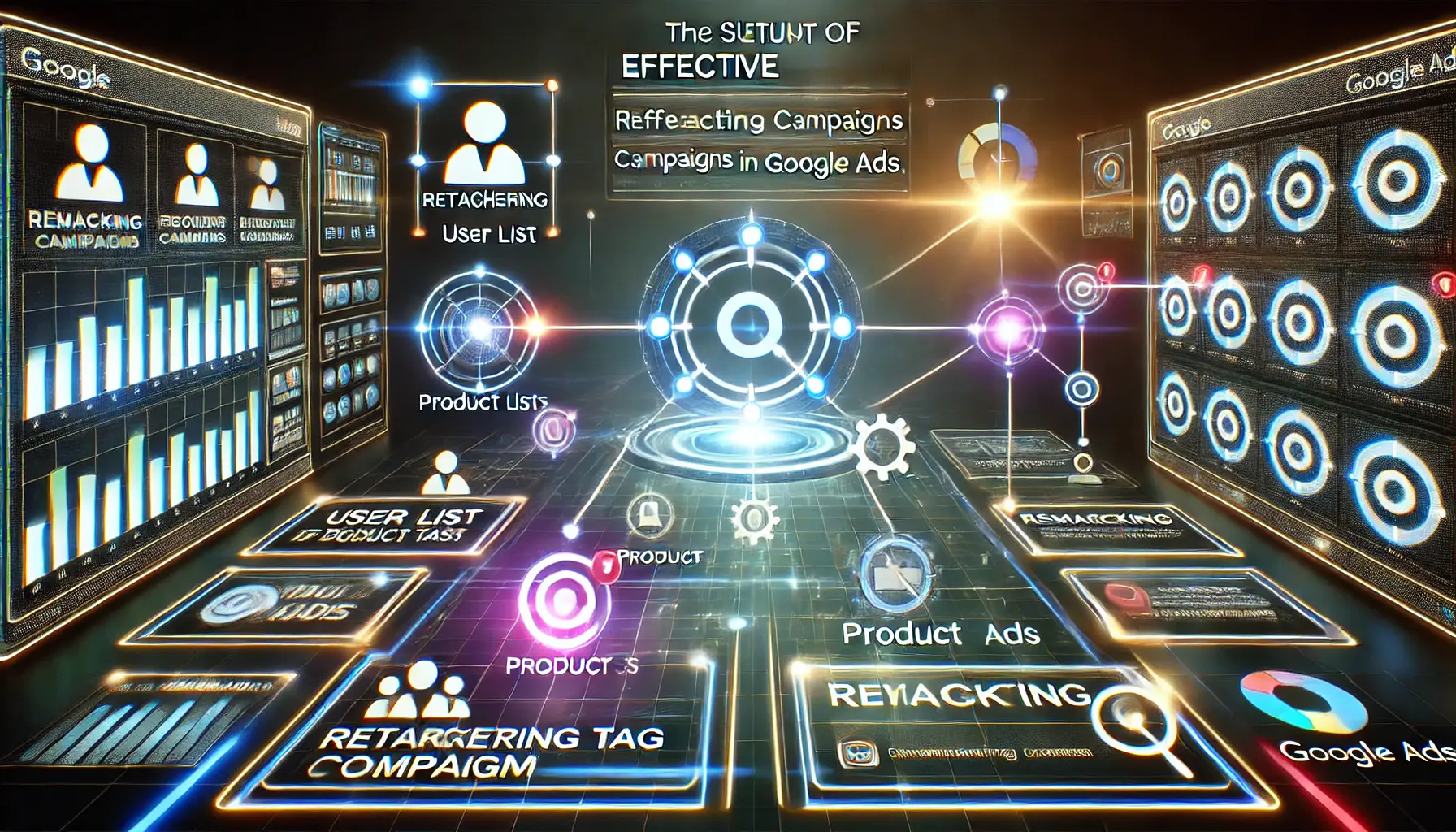
An image depicting the strategic setup process of retargeting campaigns in Google Ads.
Setting Up Effective Retargeting Campaigns in Google Ads
To create a successful retargeting campaign in Google Ads, follow these steps:
- Install the Google Ads tag: Add the remarketing tag to your website to start building your audience list.
- Create remarketing lists: Segment visitors based on their behavior, such as pages visited or actions taken, to deliver more personalized ads.
- Design compelling ad creatives: Develop ads that resonate with your audience’s interests and encourage them to return.
- Set frequency caps: Limit the number of times your ads are shown to prevent ad fatigue and annoyance.
- Monitor and optimize: Regularly review campaign performance and make necessary adjustments to improve effectiveness.

An image demonstrating techniques to prevent ad fatigue through strategic retargeting practices.
Tips for Avoiding Ad Fatigue with Retargeting
While retargeting is effective, overexposure can lead to ad fatigue, where users become annoyed or indifferent to your ads.
To avoid this:
- Frequency capping: Control how many times your ads are shown to the same user within a certain period of time.
- Rotate ad creatives: Update your ads periodically with fresh visuals and messages to keep interest high.
- Exclude converted users: Remove those who have already converted from your retargeting lists to avoid wastage.
By applying thoughtful retargeting, you can help guide prospects through the consideration phase and grow their attachment to your brand to ultimately drive conversions.
Retargeting helps keep your brand visible and trusted by re-engaging audiences during the consideration phase.

undefined
Delivering Value-Driven Content to Build Trust
In the consideration phase, providing value-driven content is essential for building brand loyalty.
By offering content that addresses your audience’s needs and interests, you establish trust and position your brand as a reliable resource.
This approach not only engages potential customers but also fosters long-term relationships.

An image representing the essence of value-driven content in sharing knowledge and solutions.
Understanding Value-Driven Content
Value-driven content goes beyond promoting products or services; it focuses on delivering meaningful information that benefits your audience.
This can include educational articles, how-to guides, industry insights, and more.
The goal is to provide content that resonates with your audience, helping them solve problems or gain new knowledge.

undefined
Strategies for Creating Value-Driven Content
To develop content that builds trust and brand loyalty, consider the following strategies:
- Know Your Audience: Conduct thorough research to understand your audience’s pain points, interests, and preferences. This helps you create content precisely tailored to their needs.
- Be Authentic: Authenticity in content marketing is vital. Ensure your content reflects the values and voice of your brand to establish a more genuine relationship with your audience.
- Solve Problems: Craft content that directly addresses and resolves the challenges your audience faces. This positions your brand as a helpful and trustworthy resource.
- Engage Through Storytelling: Utilize storytelling techniques to make your content more engaging and relatable. Sharing stories can humanize your brand and create emotional connections.
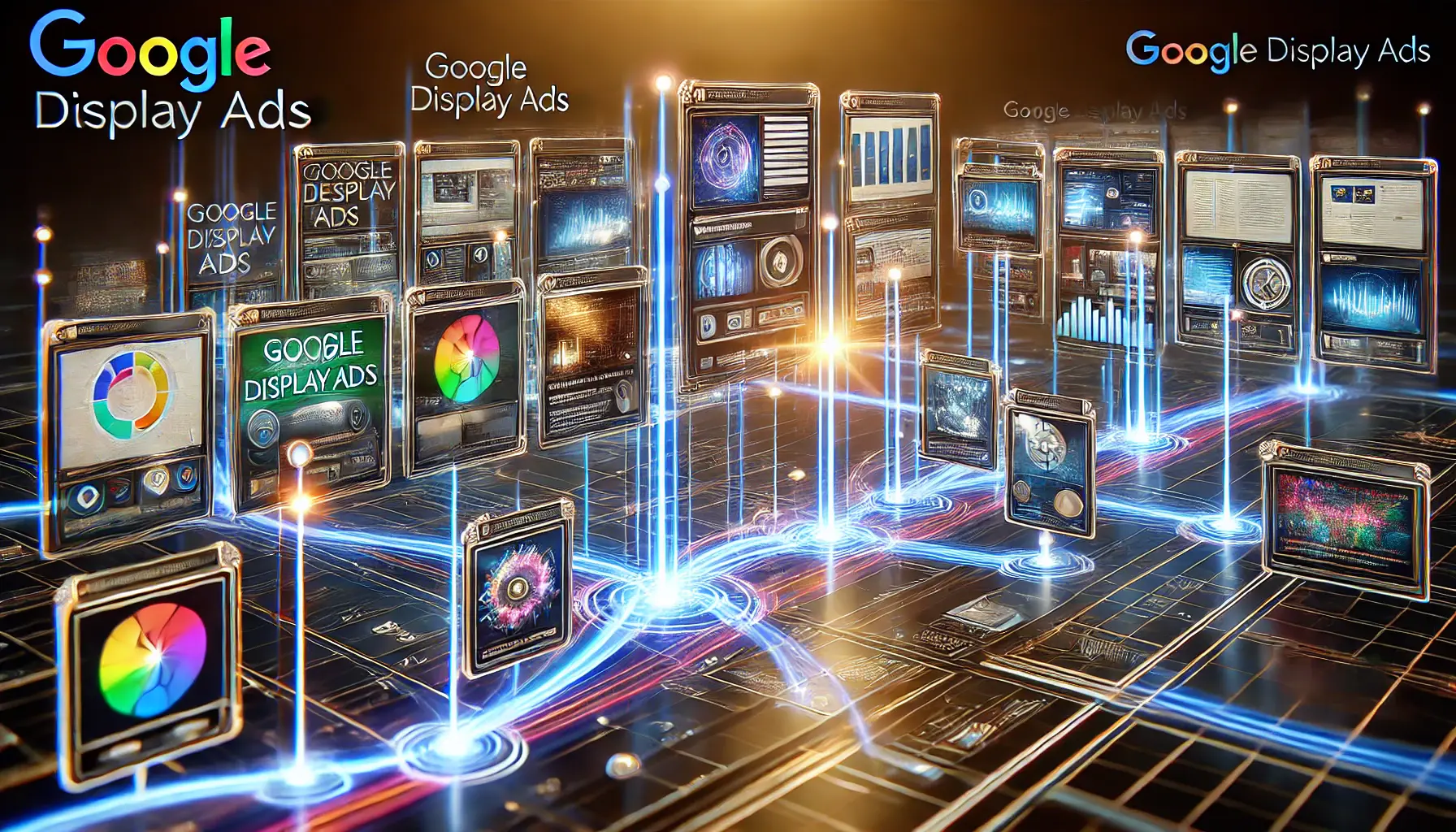
An image illustrating the use of Google Display Ads to tell a cohesive and engaging story.
Leveraging Google Display Ads for Storytelling
Google Display Ads offer a platform to amplify your value-driven content through visual storytelling.
By incorporating strong narratives into your ads, you can capture your audience’s attention and communicate your brand’s message effectively.
- Sequential Storytelling: Create multiple ads that tell one cohesive story, taking the viewer on a journey from one ad to another. This approach keeps your audience engaged and encourages them to follow through.
- Interactive Features: Add interactive elements such as quizzes or polls to your ads to actively engage users, making the ads more memorable and impactful.
- Visual Consistency: Use consistent visual elements across your ads to establish brand recognition and provide a cohesive storytelling experience.
By providing value through your content and using storytelling in your Google Display AdsA Google advertising platform that shows visual ads on websites, apps, and videos., you can build trust with your audience, enhance brand loyalty, and better guide potential customers through the consideration phase.
Providing content that educates and solves problems fosters trust and enhances customer loyalty.
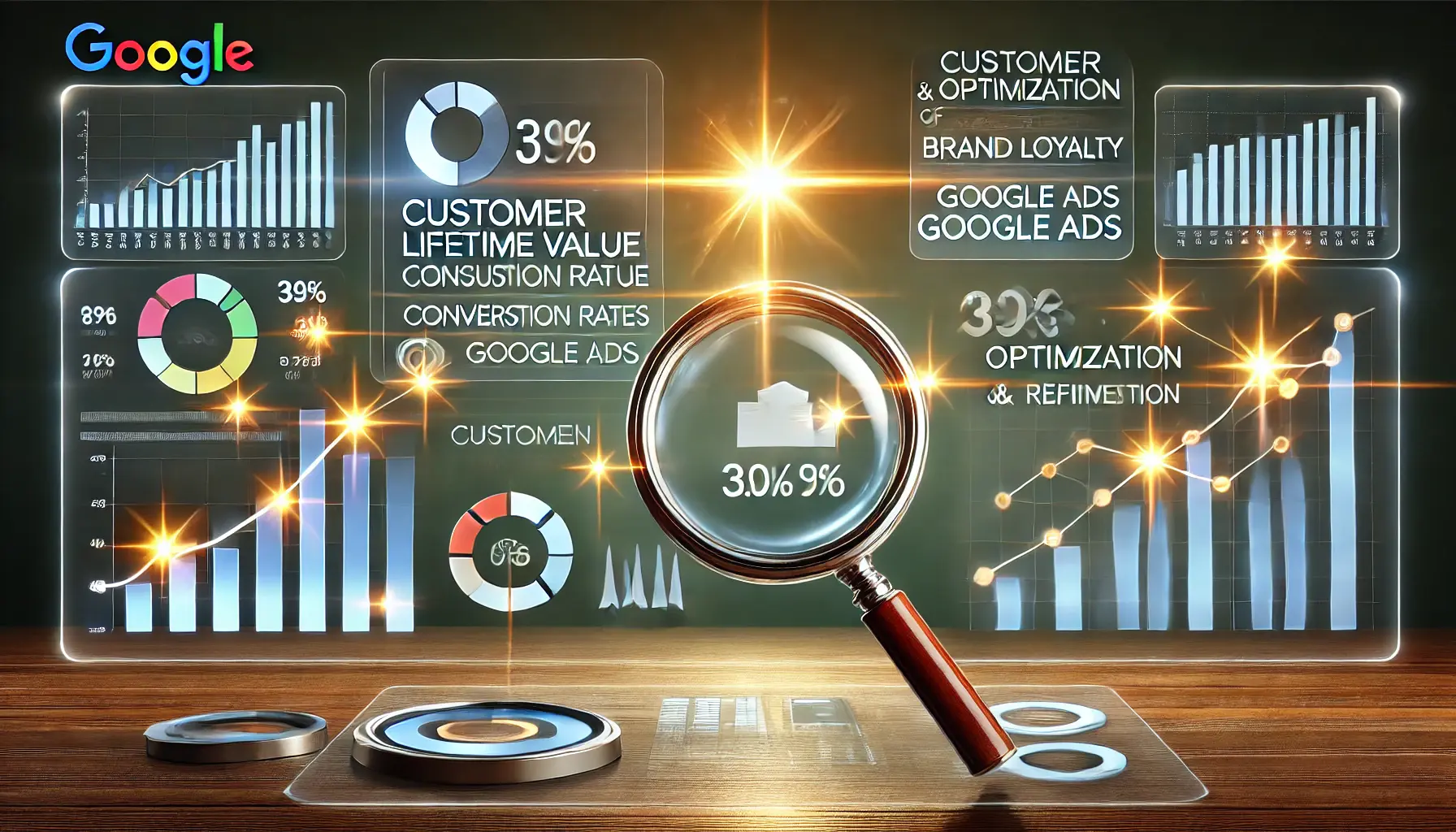
An image representing the measurement and optimization of brand loyalty through key metrics in Google Ads.
Measuring and Optimizing Brand Loyalty in Google Ads
Building brand loyalty is a continuous process that requires regular assessment and refinement.
Utilizing Google Ads effectively can enhance this loyalty, but it’s crucial to measure and optimize your strategies to ensure they resonate with your audience.
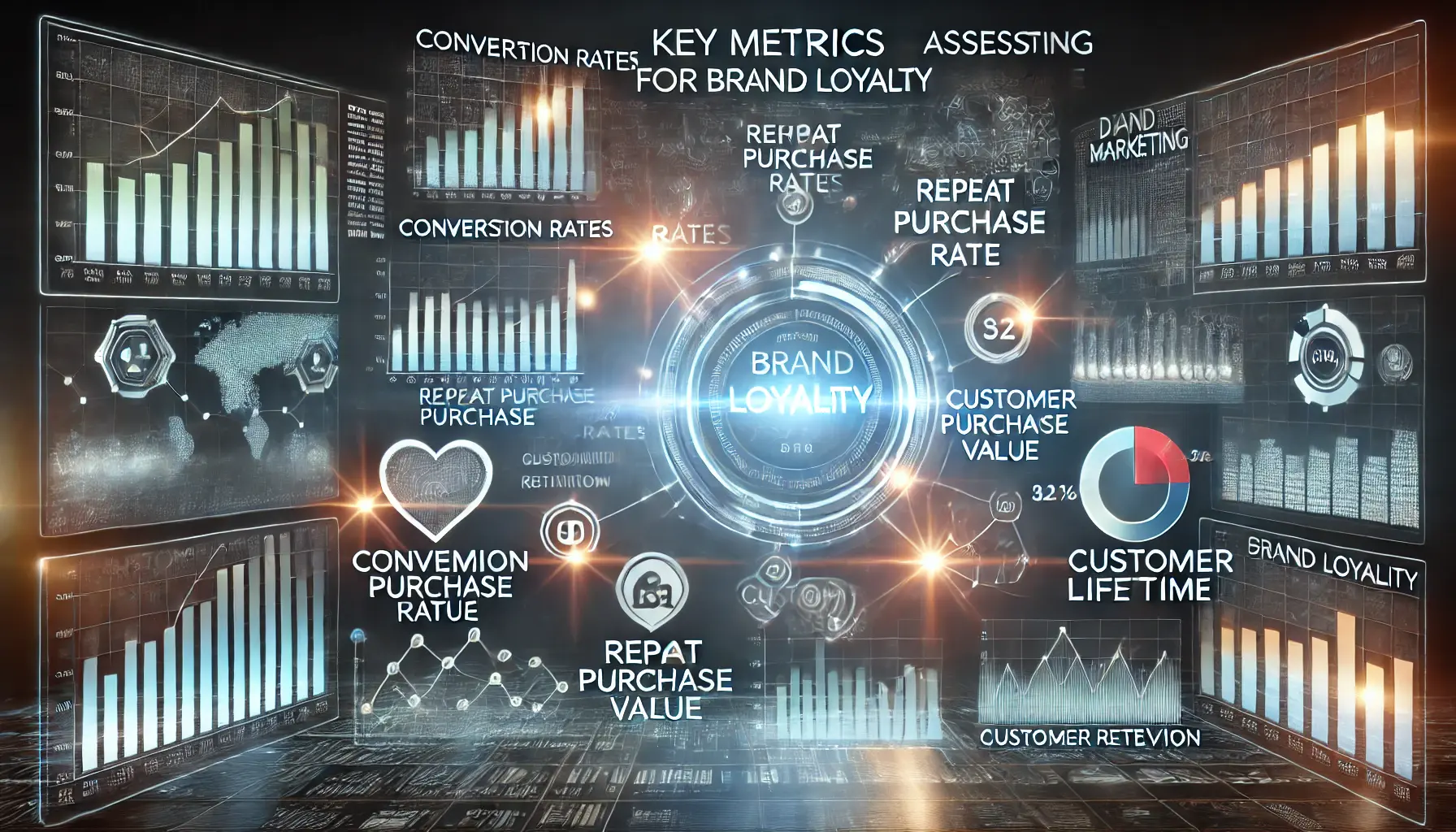
An image illustrating key metrics used to assess brand loyalty through digital tracking and analysis.
Key Metrics for Assessing Brand Loyalty
To gauge the effectiveness of your brand loyalty initiatives, monitor the following metrics:
- Impressions: Track how often your ads are displayed to assess brand visibility.
- Click-Through Rate (CTR): Evaluate the percentage of ad views that result in clicks to measure engagement.
- Conversion Rate: Determine the proportion of clicks that lead to desired actions, indicating the success of your campaigns.
- Customer Lifetime Value (CLV): Estimate the total revenue expected from a customer over their relationship with your brand to understand long-term loyalty.
- Repeat Purchase Rate: Monitor the frequency of repeat transactions to assess customer retention.
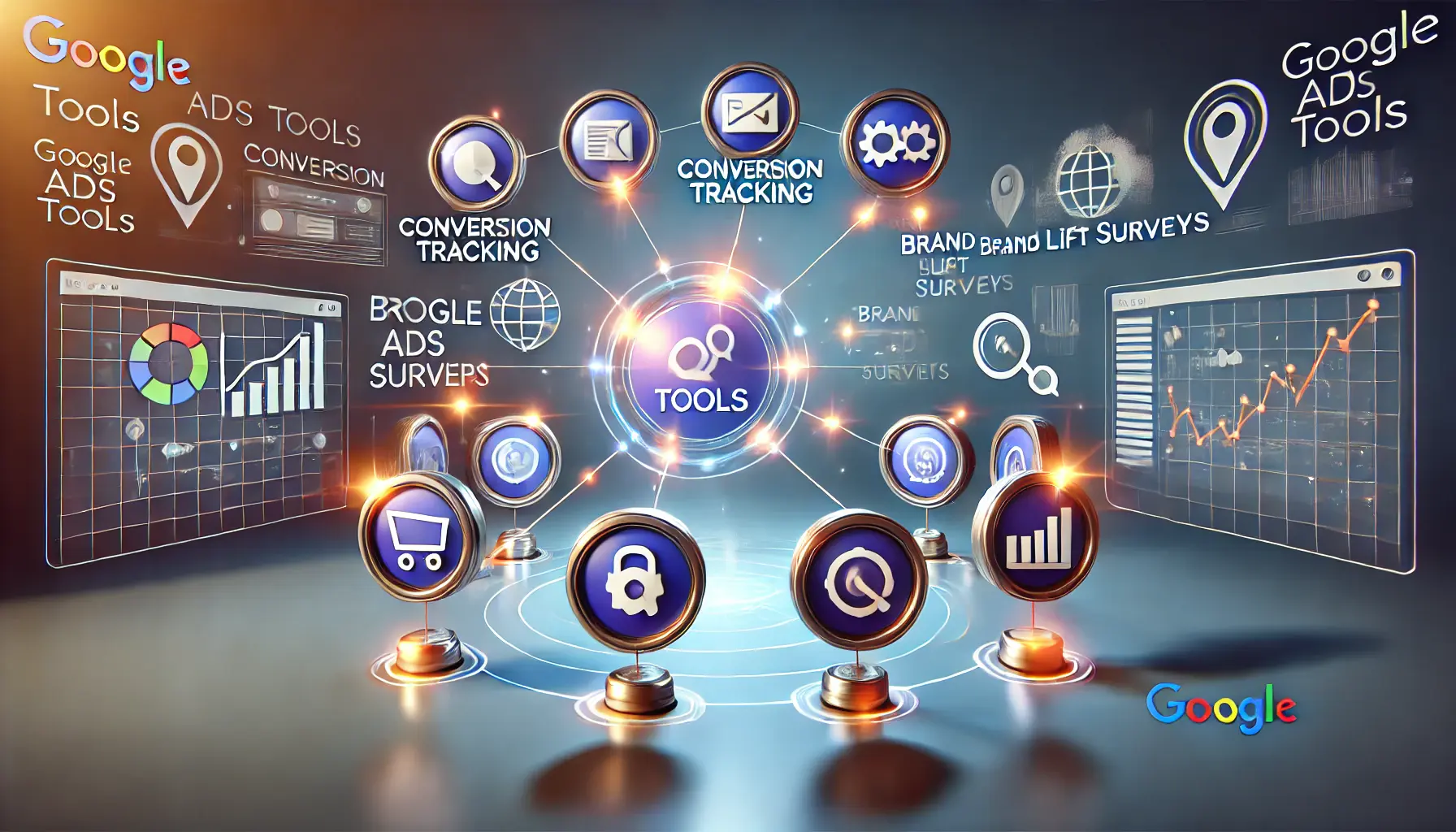
An image showcasing the integration of Google Ads tools for measuring campaign performance.
Utilizing Google Ads Tools for Measurement
Google Ads offers several features to help measure and enhance brand loyalty:
- Brand Lift Surveys: Implement surveys to assess changes in brand awareness and perception resulting from your campaigns.
- Conversion Tracking: Set up tracking to monitor actions taken after ad interactions, providing insights into campaign effectiveness.
- Google Analytics Integration: Combine Google Ads with Google Analytics to gain a comprehensive view of user behavior and campaign performance.
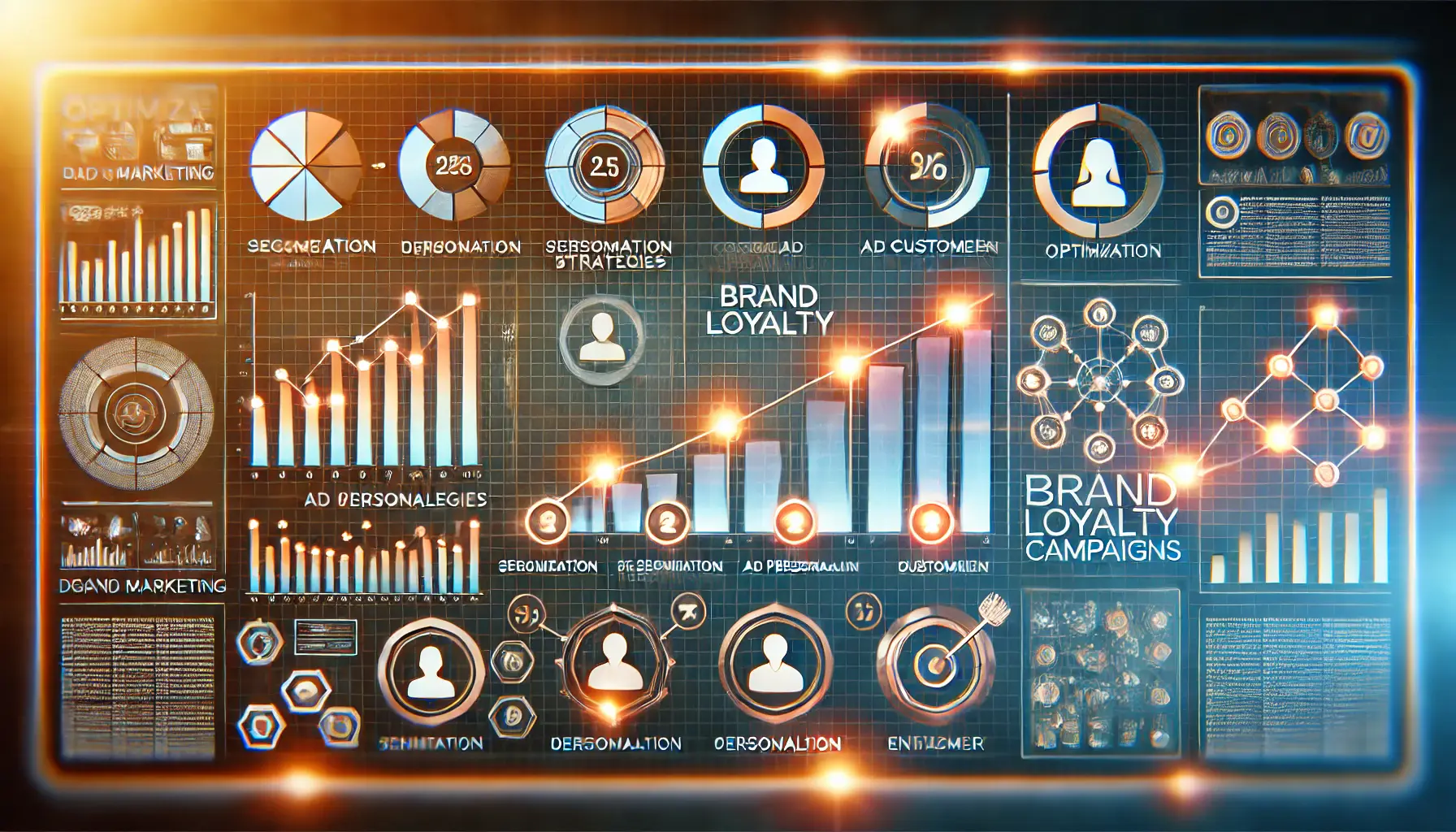
An image showcasing the optimization process for brand loyalty campaigns through digital strategies.
Strategies for Optimizing Brand Loyalty Campaigns
Enhance your brand loyalty efforts by implementing the following strategies:
- Audience Segmentation: Divide your audience based on demographics, behavior, and interests to deliver personalized ad experiences.
- Remarketing Campaigns: Re-engage users who have previously interacted with your brand to encourage repeat engagement and conversions.
- Ad Personalization: Tailor ad content to align with individual user preferences, increasing relevance and fostering loyalty.
- Frequency Capping: Limit the number of times your ads are shown to the same user to prevent ad fatigue and maintain positive brand perception.
- A/B Testing: Experiment with different ad creatives, messages, and targeting options to identify the most effective combinations.
By consistently measuring key metrics and optimizing your strategies within Google Ads, you can strengthen brand loyalty and cultivate enduring customer relationships.
Measure impressions, CTR, and customer lifetime valueThe total revenue a business expects to earn from a customer throughout their relationship. to optimize campaigns effectively.
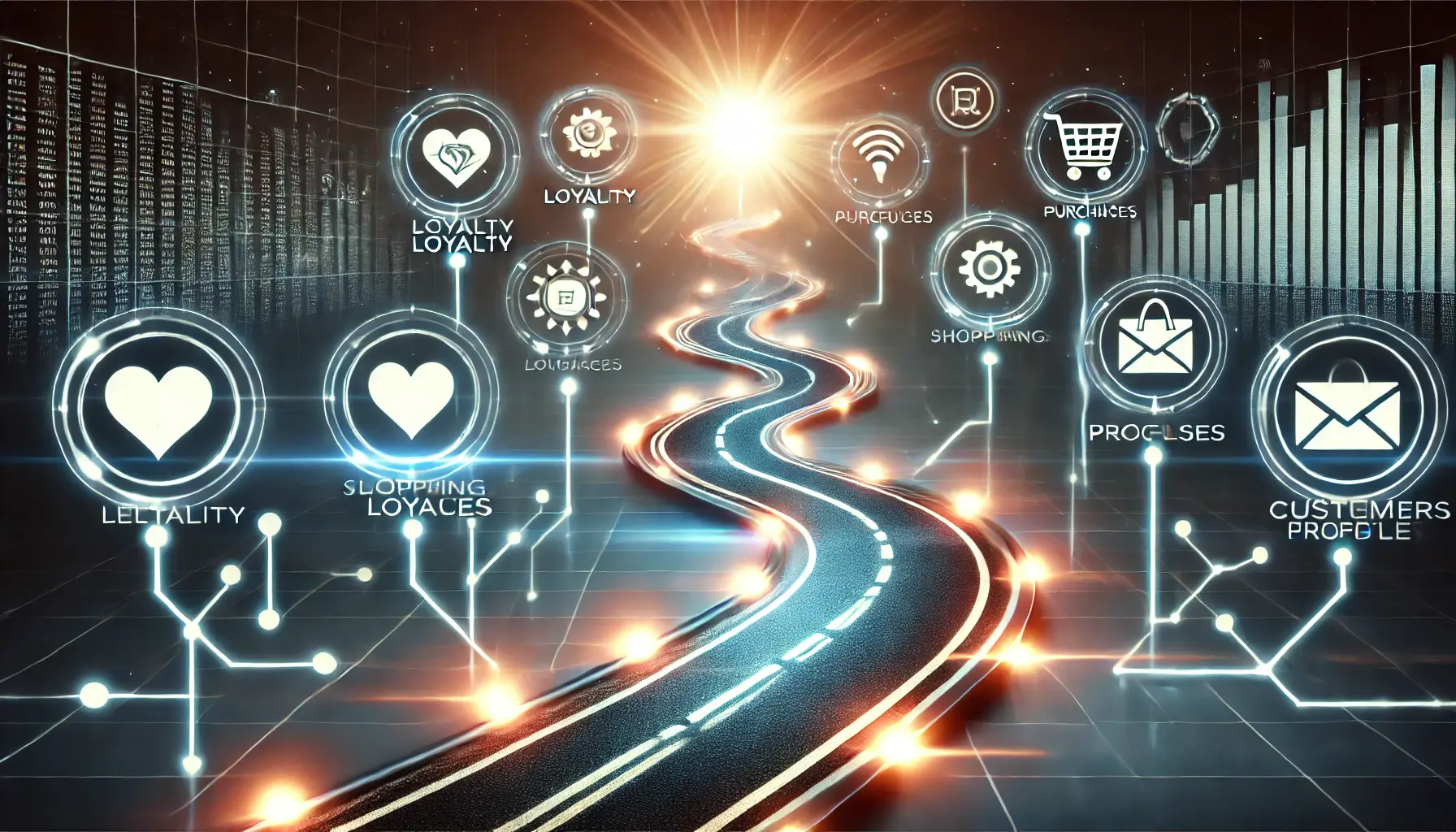
An image depicting a strategic roadmap for building brand loyalty with key milestones along the way.
Building Brand Loyalty: A Strategic Roadmap
Building brand loyalty is an essential component of sustained business success, particularly in today’s highly competitive digital marketing landscape.
The strategies presented in this article can help businesses establish trust, foster engagement, and create lifelong connections with their target audience during the consideration phase.
By leveraging tools like Google Ads and focusing on customer-centric approaches, you can transform potential customers into loyal advocates for your brand.
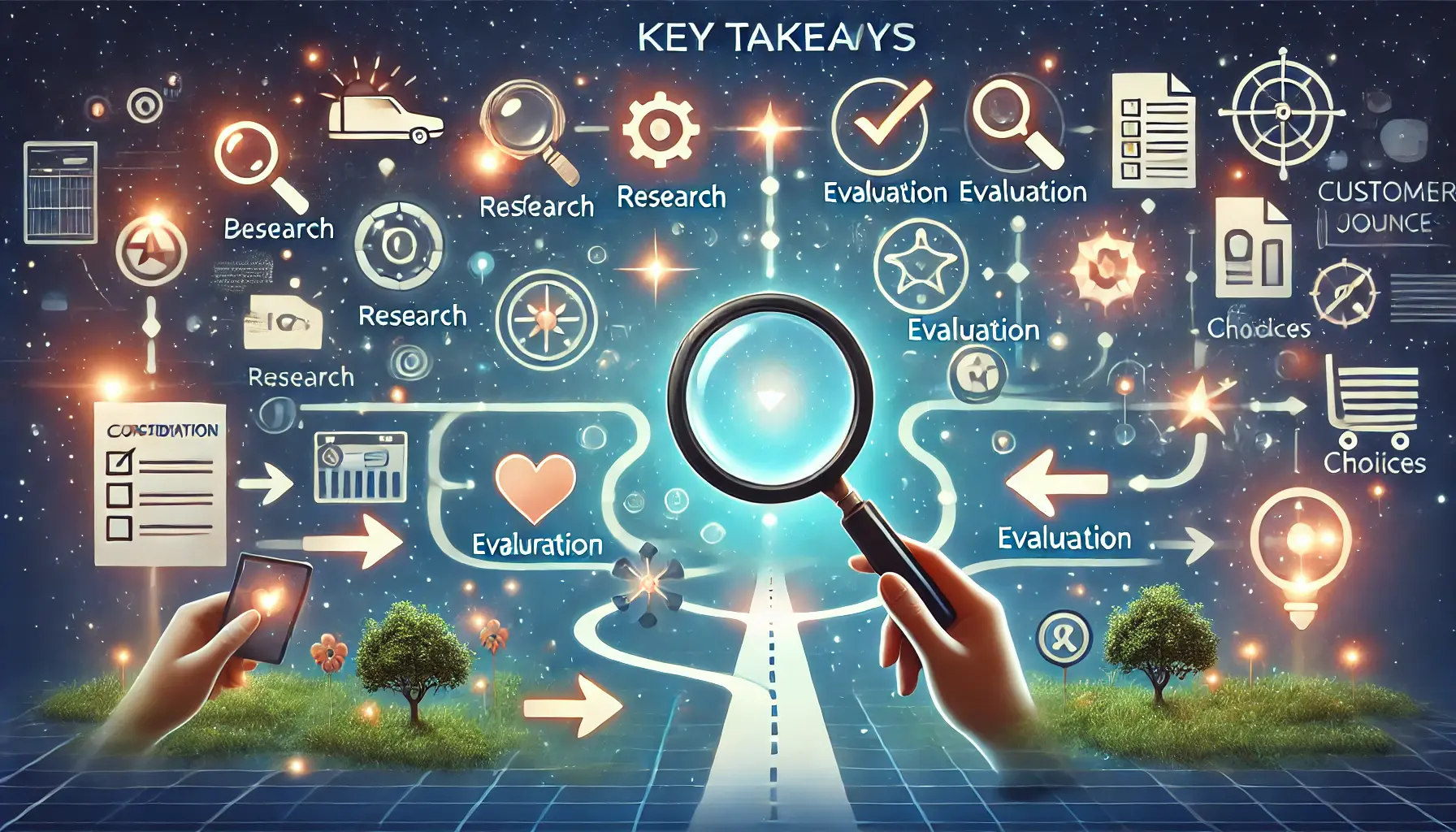
An image representing key takeaways from the consideration phase of the customer journey.
Key Takeaways from the Consideration Phase
Throughout the article, we explored practical strategies to build brand loyalty.
Here’s a summary of the key insights:
- Understanding Brand Loyalty: Recognize the consideration phase as a critical moment to influence customer decisions and establish trust.
- Personalized Campaigns: Create ads that resonate with audience preferences using Google Ads features like Custom Audiences and Dynamic Remarketing.
- Retargeting Strategies: Re-engage users who have interacted with your site, keeping your offerings top-of-mind to guide them toward conversion.
- Value-Driven Content: Deliver meaningful, problem-solving content that positions your brand as a trustworthy and reliable resource.
- Measurement and Optimization: Use metrics such as impressions, CTR, and customer lifetime value to assess and refine your brand loyalty efforts.
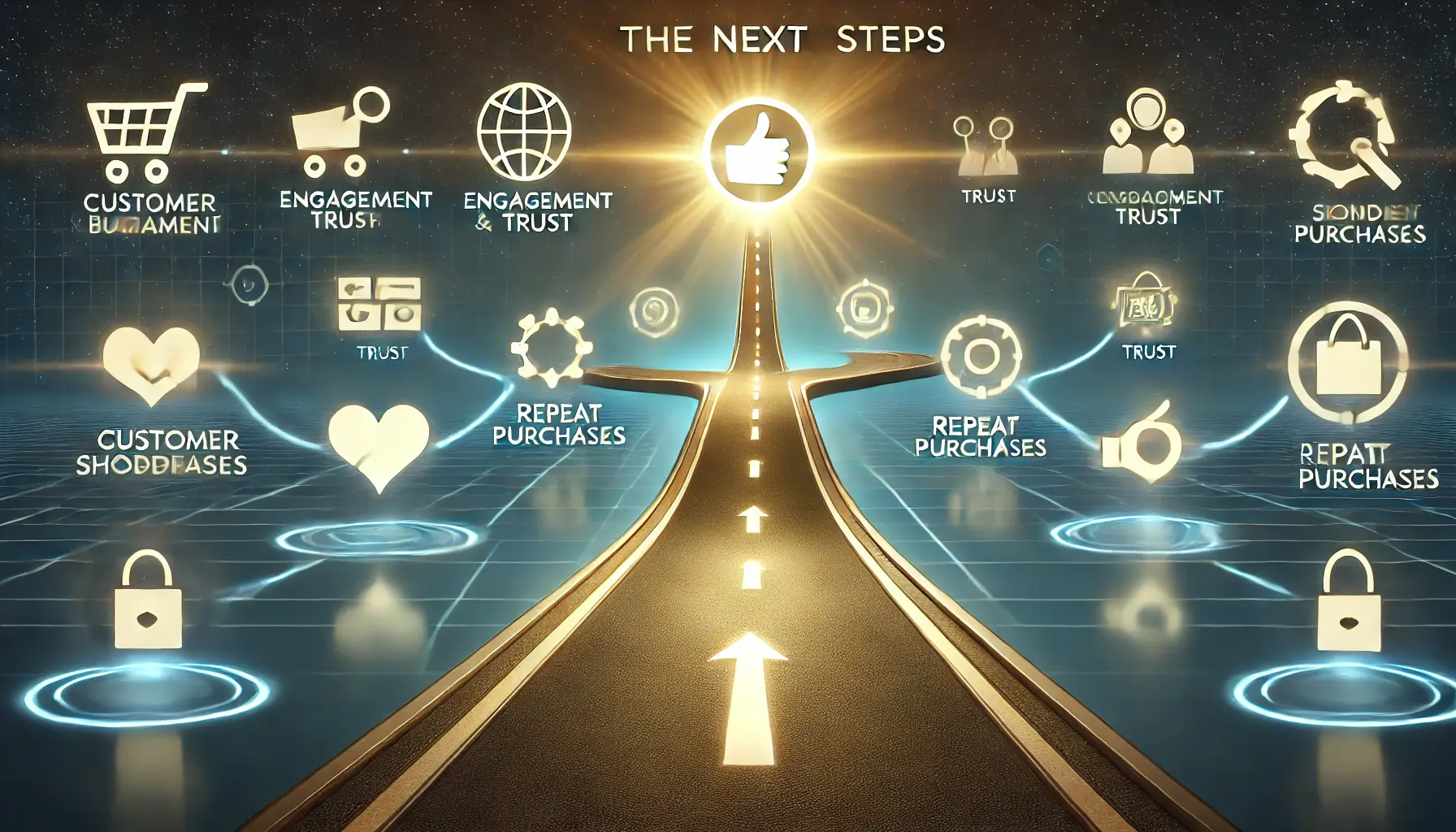
undefined
Next Steps in Brand Loyalty
Brand loyalty is a concept that requires constant evolution and reevaluation.
This involves not only understanding customer behavior deeply but also staying ahead of industry trends and utilizing advanced tools for precise targeting and engagement.
Google Ads serves as a powerful platform to implement these strategies effectively.
From dynamic ad personalization to advanced analytics, it provides marketers with the resources needed to drive loyalty and build long-term customer relationships.

An image representing the final thoughts and strategic reflection in brand loyalty.
Final Thoughts
Building brand loyalty is not a one-time effort but a continuous process of delivering value, maintaining trust, and creating meaningful connections.
By implementing the tactics discussed in this article, businesses can strengthen their brand presence during the consideration phase and beyond, fostering sustained growth and customer loyalty.
Remember, brand loyalty is more than a marketing objective—it is a commitment to understanding and serving your audience better every day.
Brand loyalty is built on trust, engagement, and customer-focused strategies that evolve over time.
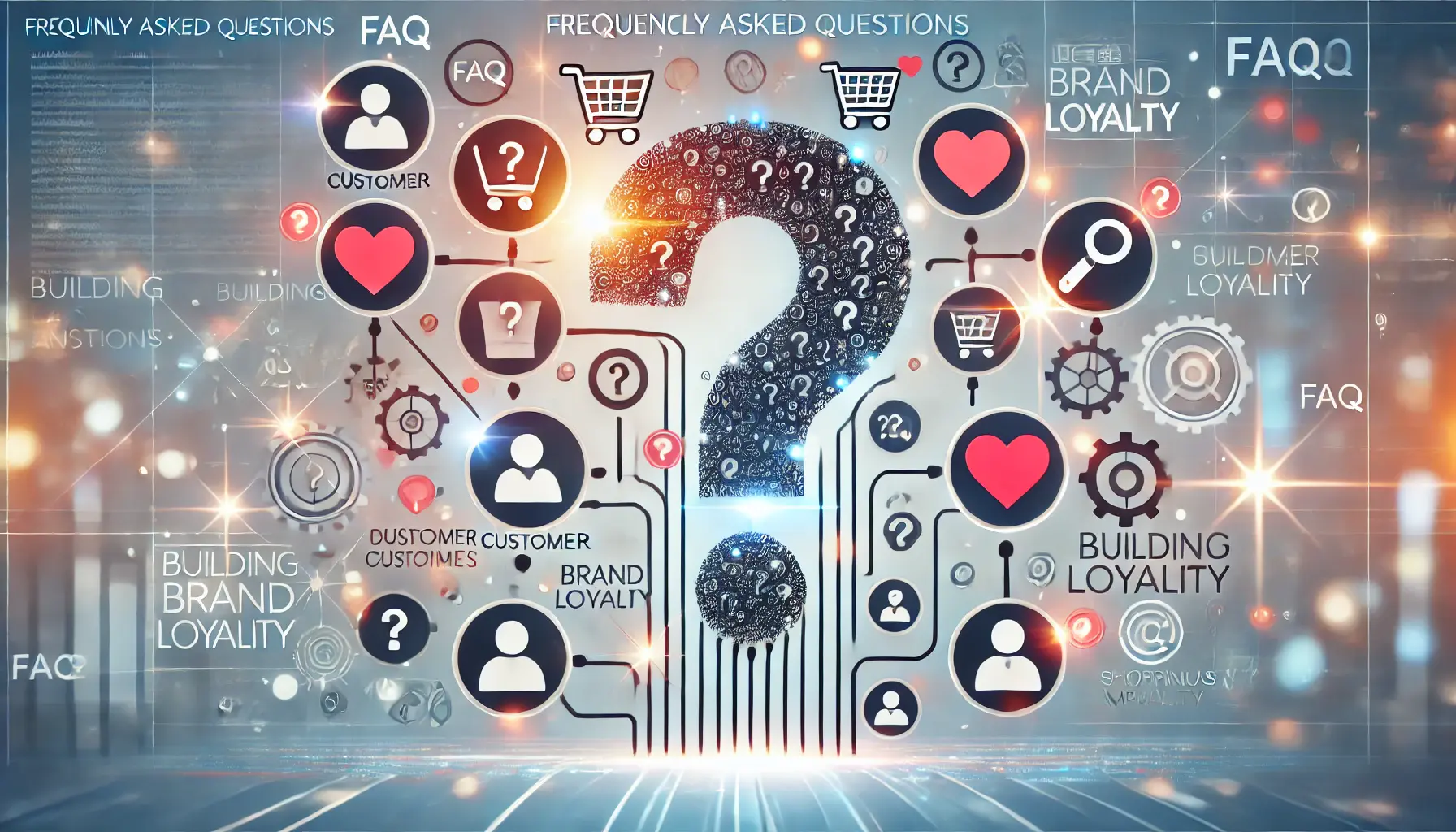
An image representing frequently asked questions about building brand loyalty with icons of customer engagement and trust.
Your campaigns can be managed by an agency specialized in Google Ads, check out our service page.
Frequently Asked Questions on Building Brand Loyalty
The consideration phase is when potential customers evaluate different brands to meet their needs, moving beyond mere awareness.
Personalized ads resonate with individual preferences, fostering a deeper connection and increasing the likelihood of customer loyalty.
Retargeting re-engages users who have interacted with your brand, keeping your offerings top-of-mind and encouraging repeat engagement.
Providing meaningful content addresses audience needs, establishing trust, and positioning your brand as a reliable resource.
Impressions, click-through rates, conversion rates, customer lifetime value, and repeat purchase rates are key metrics.
Google Ads offers Brand Lift SurveysGoogle Ads surveys designed to measure changes in brand perception and awareness. and conversion tracking features to assess and improve brand loyalty efforts.
Strategies include audience segmentation, remarketing, ad personalization, frequency cappingA setting that limits how often an ad is shown to the same user., and A/B testing.
Storytelling creates emotional connections, making your brand more relatable and memorable to potential customers.
Frequency capping limits ad exposure to prevent audience fatigue, maintaining a positive perception of your brand.




